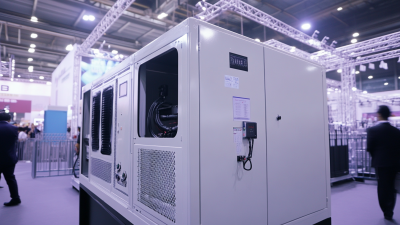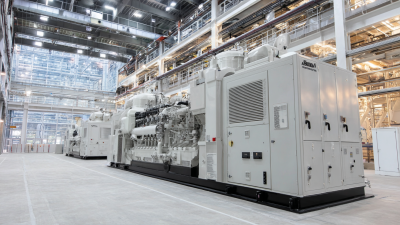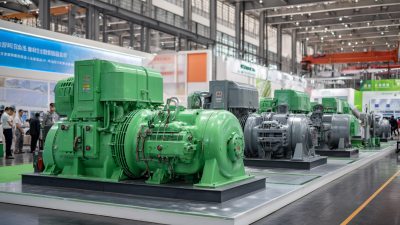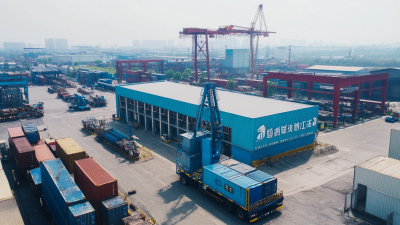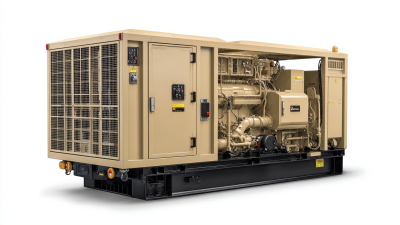
-
Home
-
Products
-
Service
-
About Us
-
Solution
-
Videos
-
News
-
Contact Us
Leave Your Message

The future of sustainable energy is increasingly shaped by innovative Power Generator Projects that aim to reduce reliance on fossil fuels and minimize environmental impact.
According to the International Energy Agency (IEA), renewable energy sources are expected to contribute nearly 80% of global electricity generation by 2030, demonstrating a significant shift towards cleaner technologies. Moreover, a report by the International Renewable Energy Agency (IRENA) projects that investments in renewable energy could reach up to $20 trillion by 2040, highlighting the critical role of power generation innovations.

As nations strive to meet carbon neutrality goals, advancements in energy storage, smart grid technologies, and hybrid power systems are becoming pivotal.
This evolution not only enhances energy efficiency but also supports economic growth and energy security. In this context, exploring the future of sustainable energy through the lens of Power Generator Projects offers a pathway to a more resilient and environmentally friendly power infrastructure.
Identifying key innovations in sustainable energy generation requires a thorough examination of emerging technologies and practices that prioritize environmental integrity while enhancing energy efficiency. One crucial area of focus is the development of advanced solar photovoltaic systems. Innovations such as bifacial solar panels and building-integrated photovoltaics (BIPV) are transforming how solar energy is harnessed, enabling more effective energy capture and integration into urban landscapes.
Another significant innovation comes from the field of energy storage. The rise of next-generation battery technologies, including solid-state batteries and flow batteries, is revolutionizing how renewable energy can be stored and used. These advancements not only extend the life and efficiency of energy storage systems but also contribute to grid reliability by allowing for the optimal use of intermittently generated renewable energy. By prioritizing these cutting-edge developments, stakeholders in sustainable energy can ensure that future power generator projects are both innovative and effective in addressing global energy challenges.
Emerging power technologies present significant opportunities for reducing environmental impact, yet their evaluation requires comprehensive methodologies. A recent lifecycle assessment conducted on hydrogen production pathways in Australia highlights the importance of quantifying greenhouse gas emissions at various stages of energy generation. The study, published in Frontiers in Energy, emphasizes that understanding the full lifecycle—from production to utilization—is crucial for determining the sustainability of new energy sources. By analyzing these impacts, stakeholders can make more informed decisions about integrating hydrogen into the energy mix while minimizing ecological footprints.
In the U.S., similar assessments are taking shape as the Department of Energy establishes critical infrastructure testing at the Idaho National Laboratory. These initiatives aim to analyze the robustness of the electric grid in accommodating innovative energy technologies. Reports indicate that infrastructure resilience is vital to support the adoption of renewable energy projects, ensuring that the integration does not compromise environmental safety or energy reliability. The intersection of technological advancement and diligent environmental assessment will be pivotal as we strive towards a sustainable energy future.
This chart illustrates the potential environmental impact reduction of various emerging power technologies over a decade. The data reflects projected efficiency improvements and emissions reductions associated with solar, wind, and hydroelectric power technologies.
As the world increasingly pivots toward sustainable energy, integrating renewable energy solutions into existing power infrastructure has become a critical focus for energy developers. According to a report by the International Renewable Energy Agency (IRENA), renewable energy capacity globally reached 2,799 GW in 2020, and investments in renewable energy projects are expected to exceed $2.1 trillion by 2025. However, to fully realize these investments, existing power grids must adapt to accommodate the fluctuating generation patterns of renewable sources like solar and wind.

One innovative approach to integration involves the development of smart grid technologies that enhance grid resilience and efficiency. The U.S. Department of Energy reported that smart grid initiatives could save up to $200 billion in operational costs by 2030 while enabling the seamless incorporation of distributed energy resources (DERs). Furthermore, projects like the UK’s "Floating Wind Farm" showcase the potential of hybrid systems that combine offshore wind with energy storage. This not only diversifies energy sources but also creates a more stable energy supply, significantly reducing dependency on fossil fuels and enhancing the overall sustainability of power generation infrastructures.
Engaging communities in sustainable power production initiatives is crucial for fostering a sense of ownership and responsibility towards local energy resources. By involving residents in the planning and decision-making processes, communities can better understand the benefits and challenges associated with sustainable energy projects. Workshops and informational sessions can be organized to educate individuals about renewable energy technologies, their environmental impacts, and potential savings. This approach not only enhances community awareness but also builds trust in the initiatives being proposed.
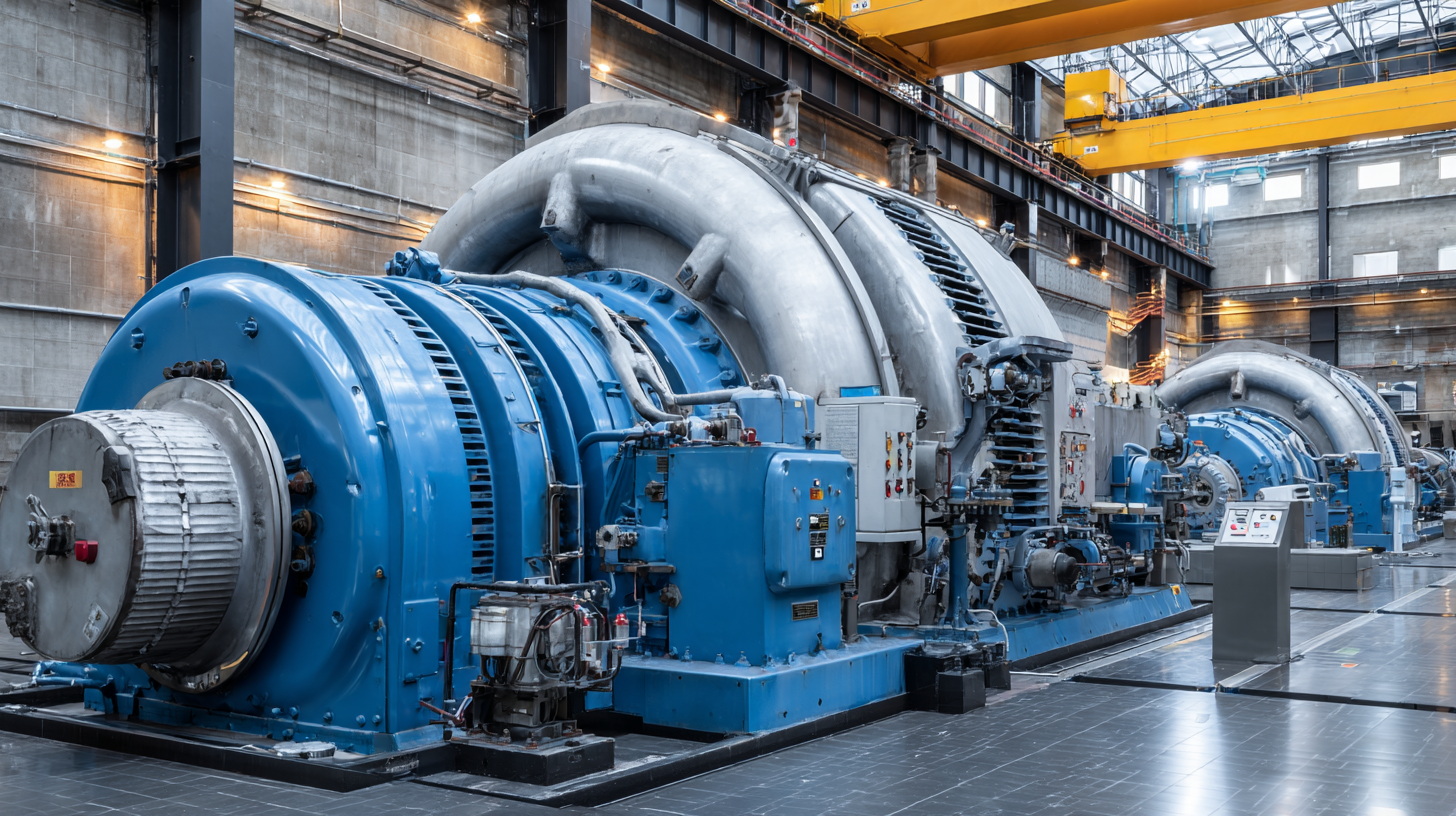
Furthermore, local partnerships play a vital role in successful engagement. Collaborating with schools, businesses, and non-profit organizations can create a network of support that amplifies the impact of sustainable energy projects. These partnerships can facilitate resource sharing and help to secure funding, while also creating a sense of collective purpose. Community-led initiatives, such as solar cooperatives or wind energy installations, empower residents to take active roles in their energy future. By fostering collaboration and education, communities can effectively contribute to a more sustainable energy landscape, ensuring that projects are not only technologically sound but also socially embraced.
The rapid evolution of sustainable energy technologies necessitates a keen understanding of future trends and their implications on power generation. According to the International Renewable Energy Agency (IRENA), the global share of renewable energy in the total energy mix is expected to triple by 2030, driven mainly by advancements in solar and wind technologies. This surge reflects a growing consensus in the industry that transitioning to cleaner energy sources is not only environmentally essential but also economically beneficial, with renewable jobs projected to reach 24 million by 2030, as reported by the International Labour Organization (ILO).
Forecasting these trends involves analyzing various factors, including technological innovations, government policies, and market dynamics. A recent report from BloombergNEF indicates that investment in renewable energy projects could exceed $10 trillion over the next decade, emphasizing the shift toward energy efficiency and sustainability. Companies that adapt to these trends—by integrating smart technology and energy storage—will likely remain competitive. For instance, the capacity of global battery storage is forecasted to increase tenfold by 2030, enhancing the reliability of renewable resources. This transformative period offers substantial opportunities, not only to reduce greenhouse gas emissions but also to reshape the global power landscape.
